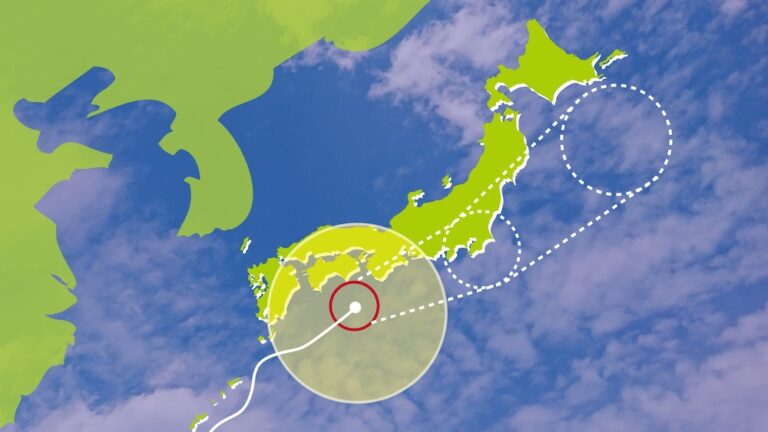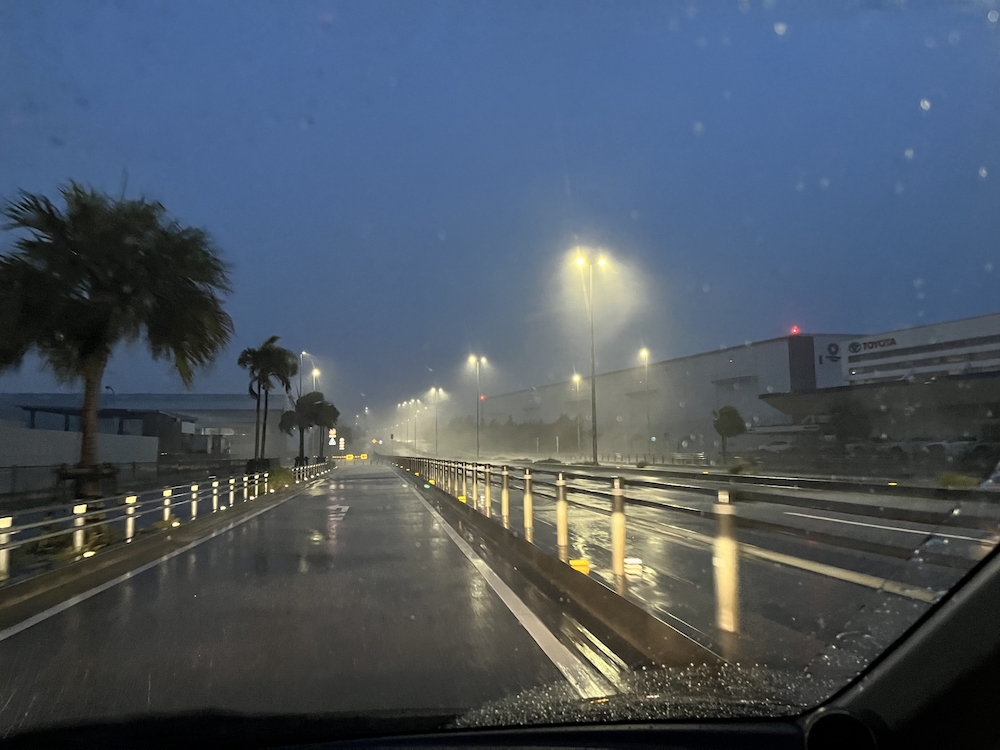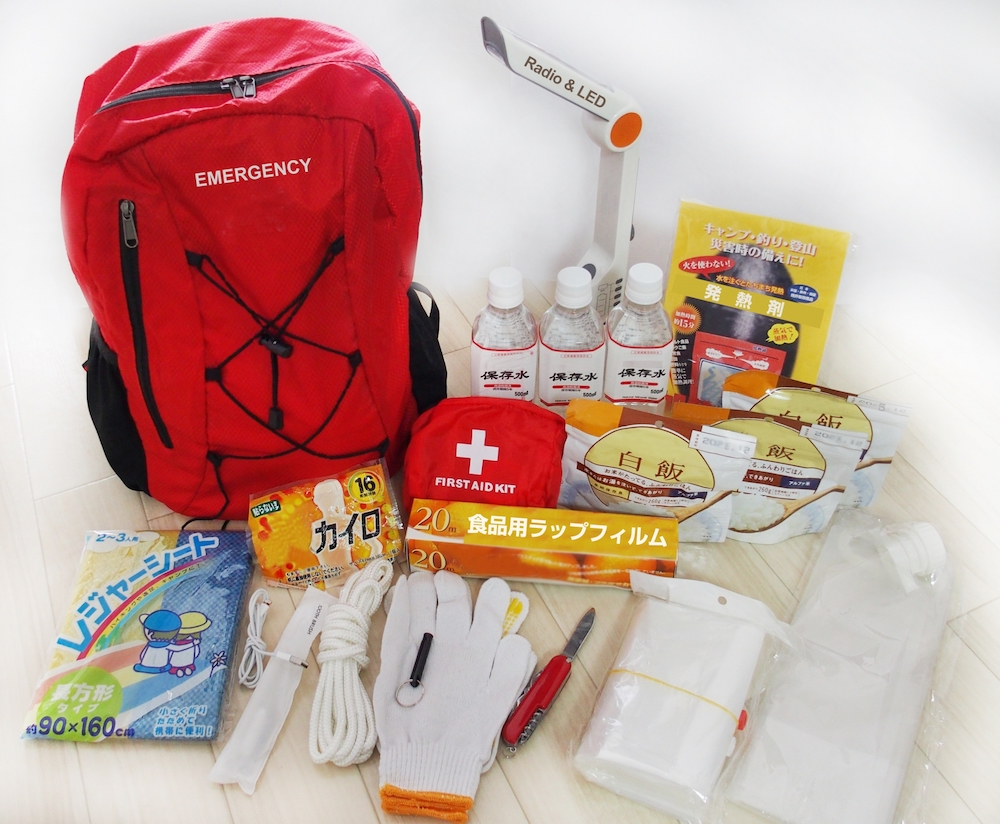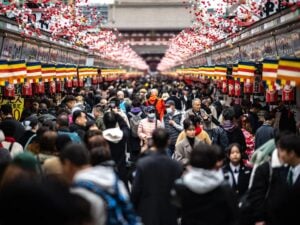
If you’re an expat living in Japan, particularly from a country where typhoons don’t occur, hearing that a typhoon is coming can be a anxiety-inducing experience. How bad will it be? Do I have to evacuate somewhere? Am I in danger? These are questions everybody asks themselves when faced with the news that a typhoon is on the way.
Typhoons are a reasonably regular occurrence in Japan with what’s considered typhoon season occurring between May and October with the majority forming in August and September. Not all of these make it to the mainland of Japan but typically a handful make landfall each year. Certain areas of Japan are more prone to typhoons than others, with Kyushu in particular typically getting more of them and the northern areas of Japan getting very few.
While typhoons can be a devastating occurrence, a little preparation can go a long way. In this article, we take a look at what to expect when a typhoon is coming and how best to prepare when a major one is bearing down on you.
What is a typhoon?
A typhoon is an intense storm that develops over warm ocean waters and can travel over large distances, sometimes encountering land. A tropical storm becomes classed as a typhoon once its wind speed reaches 118 – 156 kms per hour with the highest class of typhoons reaching wind speeds of over 194kms per hour. Essentially, a typhoon is exactly the same thing as a hurricane with the only difference being the area of the ocean in which they originate. Both typhoons and hurricanes can be referred to as tropical cyclones.
When a typhoon is approaching Japan, there is typically a lot of coverage on the news during the weather report along with the typhoon’s predicted path. Typhoons are typically given names by the Regional Specialized Meteorological Centre in Tokyo but in most coverage in Japan, a number is used. This number is usually just the order of typhoons that have occurred in the region that year. So for example, the recent typhoon 7, was the 7th that has occurred this year.

How dangerous are typhoons?
The short answer to this question is that in full force, a typhoon can be devastating. Knocking down trees and structures, causing death and massive disruptions to infrastructure. Torrential rains can cause flash flooding and mudslides which can be particularly deadly in mountainous Japan. At the other end of the scale, a typhoon can sometimes amount to little more than some very strong winds and heavy rain. The problem is, even with so much technology, it can be difficult to predict just how dangerous a particular typhoon can be. This is largely because they can suddenly grow in intensity or diminish. A typhoon that appears severely dangerous out at sea can suddenly weaken once it hits land or grow stronger as they approach. And while typhoon paths can be predicted with a high amount of accuracy, they can at times move off the predicted path.
There are several categories used to class typhoons and while there is always a chance they can become weaker, if a typhoon is a high enough category, it will provide a severe danger regardless. In Japan the classifications go from Tropical depression at the lowest end of the scale through to Violent typhoon at the highest end. A regular typhoon falls in the middle of the scale. The key thing to take away from all this is that due to those elements of a typhoon that can’t be predicted, it’s always best to be prepared if one is coming your way.
What can I do to prepare for a typhoon?

There are several simple ways that you can prepare if a typhoon is heading your way. One thing about typhoons as opposed to other natural disasters is that you’re pretty much guaranteed plenty of warning. You can track the path via the Japan Meteorological Agency website and there will be up-to-date information constantly on TV. It’s important to stay updated at all times and to be on the lookout in case an evacuation order is given.
Make sure you use the time while the typhoon is approaching to stock up on essentials from the supermarket such as water, any necessary medicines, batteries and food. A typhoon has the potential to disrupt your water and power supply so in this event, it’s good to have things like this one hand. When it comes to food, its best to stock up on things that won’t require cooking in the event that you’re unable to use your kitchen appliances. It’s also important to make sure the batteries on any essential devices you have such as your phone are fully charged.
Just before the typhoon hits it’s good to bring in anything from outside that might be caught or damaged by the wind. This includes things like houseplants, furniture or bicycles. Anything left outside has the potential to become dangerous once its picked up by the wind. Another thing to do before the typhoon arrives is to fill up your bathtub with water. This gives you a supply of water to use for washing or flushing the toilet if your water supply is stopped.
When the actual typhoon hits, its best to stay indoors at all times. If it’s a particularly strong typhoon, chances are that your work or school may shut down for the day and public transport may also come to a halt. In the event of strong winds and rain, there is a chance of being hit by debris or being caught in flooding if you’re outside. If it’s a particularly strong typhoon, chances are that your work or school may shut down for the day and public transport may also come to a halt so your opportunities for getting around may be limited anyway.
Finally, always make sure that you have an emergency kit in the event that you have to evacuate. Evacuation orders are usually given quite early but in the event you have to evacuate in the middle of the typhoon you need to make sure you have some supplies you can take. An emergency kit should include things like rain gear, water and food, a flashlight and any necessary medical supplies you might need. This is something you should have on hand in your house or apartment anyway in the event of earthquakes or any other natural disasters.
There’s no need to panic or feel anxious if a typhoon is coming. They are a fairly regular occurrence in Japan and while they can be very dangerous, being well prepared can make a huge difference.












